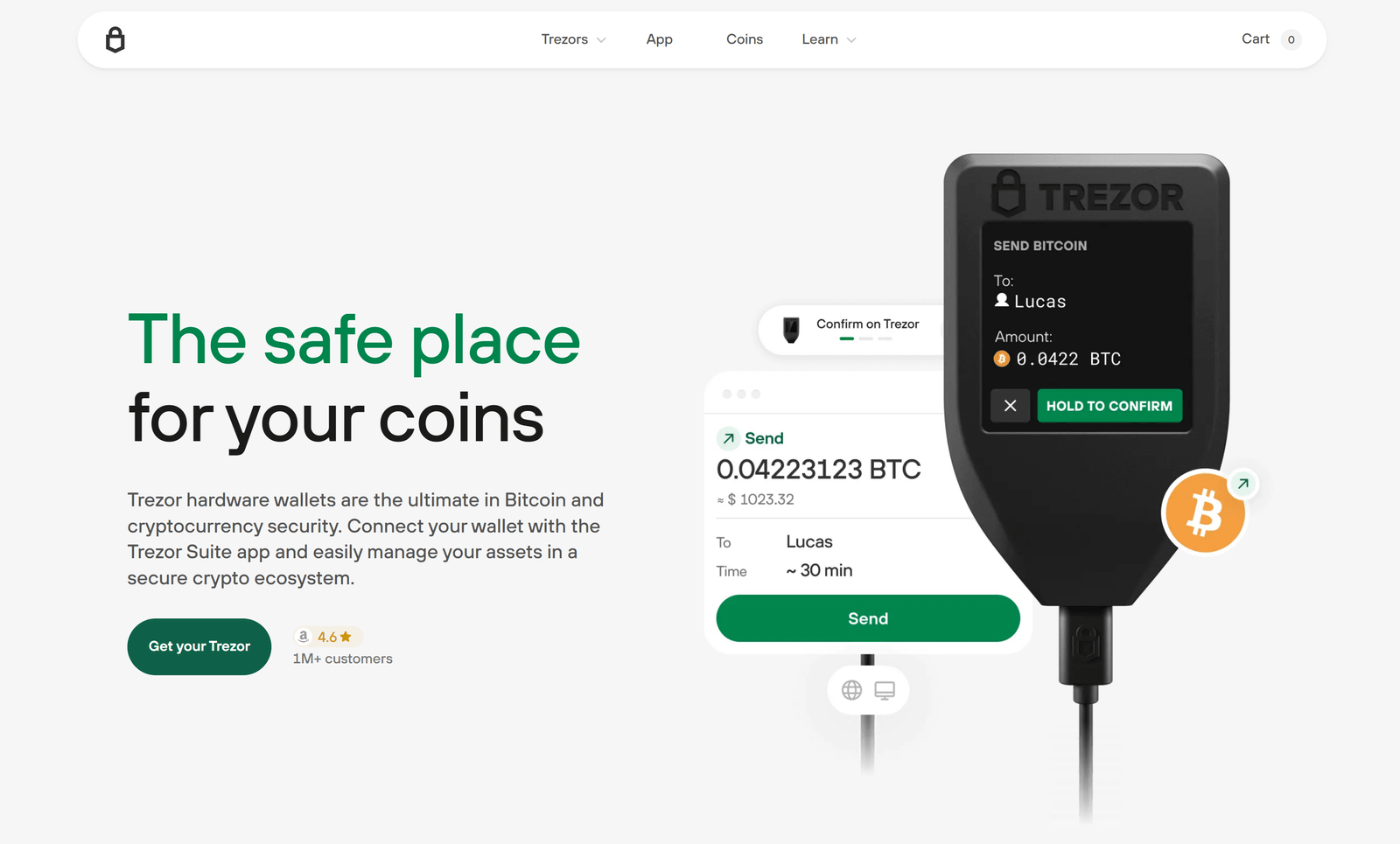Trezor Suite app® – Getting Started™ Developer Portal®
Developer Portal mission
This portal is a concise primer for developers who want to integrate Trezor hardware into applications, build extensions for Trezor Suite, or use the Suite ecosystem securely. It highlights architecture, APIs, quick start code, and security rules you must follow.
Official Developer Resources →Quick orientation — what you need to know
Trezor Suite is the official UI and ecosystem around Trezor hardware wallets; for developers, the two most important building blocks are Trezor Connect (a secure JS SDK / API for web apps) and the Suite codebase / monorepo (open source) for deeper integrations or custom deployments.
1. Architecture & core components
- Hardware device: a Trezor device stores private keys and performs signing operations on-device.
- Trezor Suite: desktop & web app acting as an official manager and user interface.
- Trezor Connect: a developer-facing API for third-party apps to request public keys, sign transactions, and authenticate users (all confirmations happen on-device).
- Open source: Suite and Connect have public repos and docs for reference and contribution.
2. Getting started (developer quick start)
- Step 1 — Read the docs: start with official Suite and Connect docs so you understand security flows and UX expectations.
- Step 2 — Try Connect in a sandbox: use the Connect demo or run the examples from the repo to learn request/response patterns.
- Step 3 — Build a minimal integration: request a public address, show it to the user, then request signature for a test transaction. Confirm everything on the device.
- Step 4 — Security review: ensure your integration never asks for the user's recovery seed, always verifies address on-device, and follows minimal-privilege principles.
3. Minimal web example (Trezor Connect)
Below is a compact example showing how a web app can request a Bitcoin public address using Trezor Connect. In production, always follow the library docs and handle user flows & errors gracefully.
// Example: request BTC address (ES6)
import TrezorConnect from 'trezor-connect';
async function getAddress() {
const response = await TrezorConnect.getPublicKey({
path: "m/44'/0'/0'/0/0",
coin: 'BTC',
});
if (response.success) {
console.log('Public key:', response.payload.publicKey);
// display and verify address on device if needed
} else {
console.error('Error:', response.payload.error);
}
}This example is illustrative — consult Trezor Connect docs and the Connect Explorer for full API options and recommended UX patterns.
4. Suite monorepo & contributing
The Suite monorepo contains the desktop/web app, Connect tools, and related packages. If you plan to modify Suite or run a custom Suite deployment (e.g., white-labeling or internal tooling), clone the repo, follow the contributor guide and run the local dev environment for testing.
5. Security & compliance essentials
- Never request or store a user’s recovery seed.
- Always verify critical transaction fields on the Trezor device screen before broadcasting.
- Keep third-party dependencies minimal and audited; do regular dependency security scans.
- Design UX to make it clear when actions require physical confirmation on-device.
6. Developer checklist
- Read Suite & Connect docs and API reference.
- Run the sample apps from the official repos.
- Implement address verification flows on-device.
- Test on multiple device models (Model One, Model T) and OSes.
- Perform a security review & automated tests before release.
7. Common developer FAQs
Q: Where do I find the official API docs?
See the Trezor Suite docs and Trezor Connect documentation for full API reference and code examples.
Q: Can third-party dApps sign transactions using Trezor?
Yes — via Trezor Connect. The user must confirm each signature on their device screen.
Q: Is it possible to run a custom Suite build for enterprise?
Yes. The Suite monorepo and contributor guides cover running local builds and custom deployments; follow the license and security guidelines when doing so.
